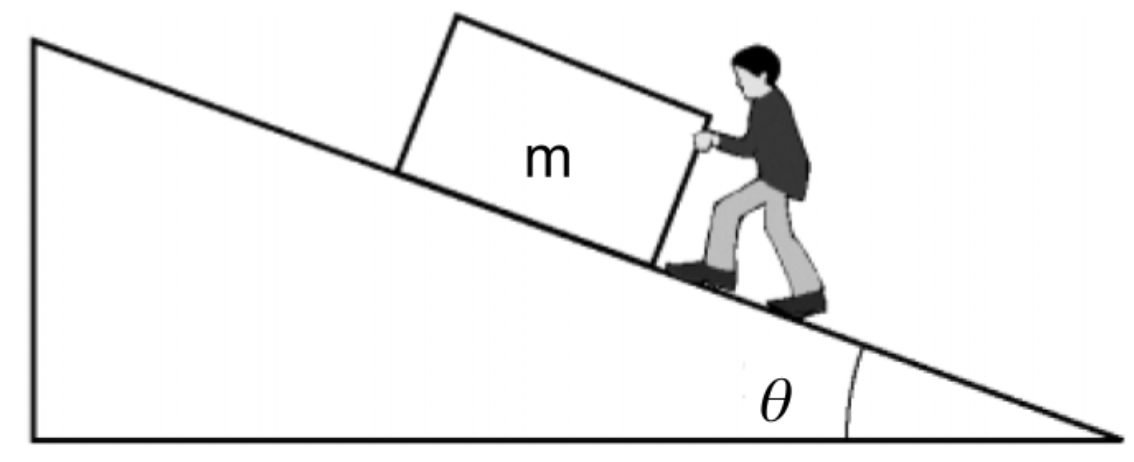AP Physics 1 🎡
257 resourcesSee Units
AP Physics 1 Free Response Question on Dynamics
👋 Welcome to the AP Physics 1 Unit 2 FRQ (Dynamics). These are longer questions, so grab some paper and a pencil, or open up a blank page on your computer. After you finish, you can see how you did with Unit 2 FRQ (Dynamics) Answers.
⏱ The AP Physics 1 exam has 5 free-response questions, and you will be given 90 minutes to complete the FRQ section. (This means you should give yourself ~18 minutes to go through each practice FRQ.)
- 🤔 Need a quick refresher of the unit as a whole? Check out the Unit 2 Overview.
- 😩 Getting stumped halfway through answering? Look through all of the available Unit 2 Resources.
Learning Objectives and Science Practices
- 2.B.1.1 Apply F=mg to calculate the gravitational force on an object with mass m in a gravitational field of strength g in the context of the effects of a net force on objects and systems. [SP 2.2, 7.2]
- 3.A.2.1 Represent forces in diagrams or mathematically using appropriately labeled vectors with magnitude, direction, and units during the analysis of a situation. [SP 1.1]
- 3.A.4.1 Construct explanations of physical situations involving the interaction of bodies using Newton’s third law and the representation of action-reaction pairs of forces. [SP 1.4, 6.2]
- 3.A.4.2 Use Newton’s third law to make claims and predictions about the action-reaction pairs of forces when two objects interact. [SP 6.4, 7.2]
- 3.B.1.3 Re-express a free-body diagram into a mathematical representation, and solve the mathematical representation for the acceleration of the object. [SP 1.5, 2.2] (This is the main LO in the FRQ).
- 3.B.2.1 Create and use free-body diagrams to analyze physical situations to solve problems with motion qualitatively and quantitatively. [SP 1.1, 1.4, 2.2]
Setup
A worker pushes a wooden crate up a ramp at a constant velocity. The ramp has been covered with a material that when warm provides enough friction that it will not slide down the hill. When the ramp is exposed to the cold the coefficient of friction changes enough that the box will easily slide down the ramp.

Questions
(a) Draw a free body diagram for the box on the top dot and a free body diagram with components on the bottom dot. The dotted line represents the incline.
FBD without Components

FBD with Components

(b) In the space provided below, derive an equation for the coefficient of friction, 𝜇, when the box is moving up the hill at constant velocity. Express your answer in terms of m, g, Fapp, trig identities, and 𝜃.
(c) If the mass of the box is 25 kg, the applied force is 250 N, and the angle 𝜃 is 22o, calculate the coefficient of friction using your equation from part b) as the person is pushing the box up the hill. Show all work.
(d) The ramp is now chilled until the coefficient of friction equals 0.02 and the box begins to accelerate down the incline. In addition, the person is no longer pushing the box. In the space provided below, draw a free body diagram for the box on the top dot and a free body diagram with components on the bottom dot. The dotted line represents the incline.
FBD without Components

FBD with Components

(e) Derive an equation for the acceleration of the box as it slides down the hill. Express your answer in terms of m, g, 𝜇, trig identities, and 𝜃.
(f) Calculate the acceleration of the box down the hill using the information given in parts (a) through (e). Show all work.
Answers & Rubric
💯 Ready to see how you did? Take a look at the Unit 2 FRQ (Dynamics) Answers.
Browse Study Guides By Unit
👟Unit 1 – Kinematics
🌀Unit 2 – Dynamics
🚀Unit 3 – Circular Motion & Gravitation
⚡️Unit 4 – Energy
⛳️Unit 5 – Momentum
🎸Unit 6 – Simple Harmonic Motion
🎡Unit 7 – Torque & Rotational Motion
💡Unit 8 – Electric Charges & Electric Force
🔋Unit 9 – DC Circuits
🔊Unit 10 – Mechanical Waves & Sound
📚Study Tools
🧐Exam Skills

Fiveable
Resources
© 2025 Fiveable Inc. All rights reserved.